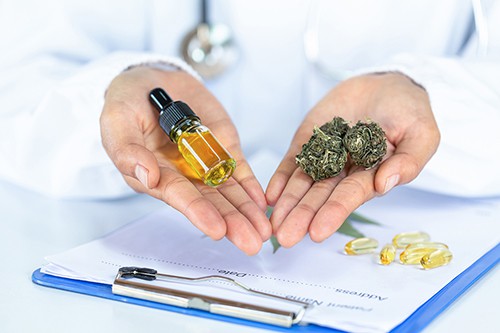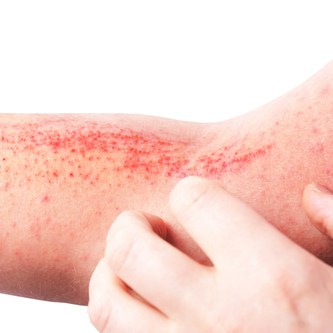What is cannabis therapy?
Cannabis has been proven effective to help patients with pain relief, insomnia, anxiety, and more. While it has previously only been FDA-approved for the treatment of nausea and vomiting, cannabis therapy is gaining traction in many different use cases throughout different fields of medicine.
We are still learning the many ways that cannabis can be used to therapeutic effect. Staying up to date on the many approved uses of cannabis therapy can help nurse practitioners find safe, alternative treatments for patients with certain conditions.
What are some conditions and diseases that cannabis can help treat?
- ADD/ADHD
- ALS
- Anxiety/Depression
- Chronic Fatigue
- Chronic Pain
- Epilepsy
- Migraine
- Multiple Sclerosis
- Parkinson’s
- PTSD
What is the endocannabinoid system?
The endocannabinoid system is a body system that was only recently discovered in the early 1990s. It is responsible for homeostasis, and scientists now believe that the endocannabinoid receptors are the most common cell receptors found in the human body.
The two main cannabinoid receptors are CB1 and CB2. CB1 is predominantly found in the central nervous system, and CB2 is predominantly found in immune cells.
What homeostatic effects come from CB1 and CB2 stimulation?
Stimulation of CB1 receptor cells has been associated with:
- Increased drive to sleep and eat
- Reduction of perceived pain, fear, and anxiety
- Maintenance of well being
- Promotion of recovery during stress
Simulation of CB2 receptors has been found to:
- Reduce the release of inflammatory mediators
- Reduce immune cell migration into the brain
Of note: It is important for nurse practitioners to know that because there are very few CB1 receptors in the brainstem and cardiorespiratory centers, there is no such thing as a lethal dose of cannabis. This can help relieve patient and family anxieties about starting cannabis use for medical reasons.
Related: Cannabis Use for Symptom Management in Palliative Care Patients
What is the difference between CBD and THC?
Marijuana has many different chemical compounds in it. The main two chemicals are cannabidiol, or CBD, and tetrahydrocannabinol, or THC. While many people consider CBD milder, it does indeed produce some mood-altering effects.
What are some of the side effects of CBD use?
CBD is biphasic with stimulating effects at small doses. It is not euphoric like THC, but it is still mood-altering. Psychoactive effects can include improved concentration, decreased fatigue, and anti-psychosis. At larger doses, CBD can be helpful for sleep.
CBD is generally well-tolerated and safe, even at high doses. It can have some side effects, including:
- Dizziness
- Lightheadedness
- Anxiety
- Tachycardia
- Anorexia
- Drug-to-drug interactions
- Jitteriness
- Drowsiness
- Diarrhea
What conditions can THC be used to treat?
In low doses, THC produces euphoria and can alter behavior, consciousness, mood, and perception. These are often the symptoms that patients want to avoid when seeking cannabis therapy. Many patients will prefer CBD for its more mild effects. At the same time, though, THC is a potent analgesic and anti-inflammatory medication. It has been proven to be an effective treatment for:
- Nausea
- Seizures
- Psychosis
- Inflammation
- Neurodegeneration (Parkinson’s, Huntington’s, and even Alzheimer’s)
- Cancer
- Anxiety
- Depression
- Diabetes
- Bacterial infections
- Bone fractures
- Insomnia
- Pain
- Spasms
What cannabinoids have been approved by the FDA?
There are three FDA-approved cannabinoids on the market today. The first two are synthetic compounds that have been on the market for decades:
- Dronabinol for nausea/vomiting and appetite stimulation with an average dose of 2.5-20mg per day.
- Nabilone for nausea/vomiting at an average dose of 1-2mg twice daily.
The last, however, Epidiolex, is a natural Cannabidiol that was only recently approved by the FDA in 2018. It is the first FDA-approved drug comprised of an active ingredient derived from the marijuana plant. Epidiolex is refined down to 99% CBD, meaning it has only negligible amounts of THC. It has been FDA-approved for three different seizure conditions with an average dose of 5-20mg daily.
Related: Cannabis Use for Symptom Management in Palliative Care Patients
Can cannabis be used to treat sleep disturbances?
According to the National Academies of Sciences, there is moderate evidence that cannabinoids are effective at improving short-term sleep outcomes for patients with obstructive sleep apnea, fibromyalgia, chronic pain conditions, and multiple sclerosis. Low doses of CBD can be stimulating and may not be appropriate for sleep. Larger doses of CBD would be best for patients in this case.
Additionally, nurse practitioners should be aware that low doses of THC may be best for falling and staying asleep. Patients may prefer tinctures or edibles, which are best for staying asleep, or inhalation or sublingual medications, which are best for falling asleep. It is important for nurse practitioners to know these distinctions in order to help patients choose the best cannabis therapy for their particular needs.
Can cannabis be used for chronic pain management?
Yes, the National Academies of Sciences recognizes conclusive evidence that cannabinoids are effective for the treatment of chronic pain in adults. While it is not used for acute pain, it has been proven beneficial in patients with chronic pain as a result of a number of conditions. Cannabis therapy has been shown to reduce inflammation, modulate pain, boost opioid analgesic effects, and shift the dysphoria associated with pain.
For some patients with chronic pain, CBD alone is not enough. In cases like cancer pain, THC and CBD together will be more effective for pain management. In cases of chemotherapy-induced peripheral neuropathy (CIPN), one study found that CBD prevented CIPN without compromising the anti-tumor effects of the chemotherapy medication.
How can nurse practitioners reduce opioid use with cannabis?
CBD has been shown to help opioids work more effectively. This means that patients will be able to take a lower dose of opioids while experiencing similar pain relief. If a nurse practitioner wants to consider cannabis to help a patient reduce opioid use, there are a few recommendations:
- Consider starting with one dominant cannabinoid at a time and adding in others as needed.
- Start with a small dose and increase by 1-2 mg every couple of days as needed.
- Consider daytime and nighttime regimens in order to decrease potential side effects like drowsiness or agitation.
- Initiate opioid tapering only once the patient has achieved an improvement in pain levels or other symptoms.
- After the first two weeks, start with a 5-10% reduction of the opioid dose every 1-4 weeks depending on patient tolerance.
Earn CE hours with our online course on Cannabis Use in Palliative Care Patients (free with Passport Membership)!




